The Planetary Society • Nov 26, 2019
The Solar System According to Carolyn Porco
The leader of the Cassini spacecraft imaging team discusses pale blue dots, life on Enceladus, terraforming Mars, Pluto, Carl Sagan, and more.
There aren't many people who have been more influential in bringing us pretty pictures of the planets, and the scientific insights that come from them, than Carolyn Porco. She was on the imaging team for Voyager, helping to calculate the camera exposure times that brought us our only up-close looks at the rings of Uranus and Neptune. Then, as the leader of the Cassini imaging team, she was responsible for bringing us 13 years of amazing pictures of Saturn. In 2012 she was named one of TIME's 25 Most Influential People in Space.
Porco stopped by our office recently to record an extended Planetary Radio interview with host Mat Kaplan. Their wide-ranging conversation covered the pale blue dots from both Voyager and Cassini, life on Enceladus, terraforming Mars, Pluto, and Carl Sagan. Below is a condensed version of their conversation, edited for clarity and brevity. You can also learn more about Porco by visiting her website.
Wishing to avoid misattributions and for clarification, Carolyn has amended the transcript of her interview. Her changes are italicized below.
The pale blue dot
Mat Kaplan: We were asked to determine the three most popular planetary science missions of all time. We did the polling, and two are Voyager and Cassini. The third is Curiosity on Mars. Not surprising, is it?
Carolyn Porco: No, not surprising at all to me. Everybody loves Voyager. If I give a talk about Cassini and I mention Voyager, people clap. It really felt like all of us were on that spacecraft, making our way across the solar system and into interstellar space. It had that wonderful look back of our own planet to say goodbye, and then it spun on its heels and headed off into eternity. It was the grand adventure that really showed us in detail what our solar system was like. To me, it is the Apollo 11 of the planetary program. It has that kind of iconic stature.
Mat Kaplan: You mentioned, in passing, the pale blue dot. You apparently had a part in that.
Carolyn Porco: Carl [Sagan] deserves absolutely full credit for making it happen. In 1981, he first proposed the idea of imaging the Earth from Voyager 1 after its final encounter with Saturn. It didn't happen at that time because he couldn't convince the project management that it was worthwhile. But, as soon as I was added to the imaging team in late '83, and not realizing anybody else had proposed the idea already, I started to hawk around the idea that we should turn the spacecraft around and take a picture of the Earth and the other planets. It would be a wonderful thing to see our planet from afar, and I also thought, wouldn't it be cool to show what our solar system would look like to an alien coming in from outside?
I remember vividly walking into Brad Smith's office [Smith was the leader of the Voyager imaging team], and saying to him, "You know, I think it would be really good to take a picture of the earth and the other planets." And right off the bat, he didn't say, "Oh, what a crazy idea, I don't know if they'd let us do that." He said, "Well, if you're going to do that, you have to turn the spacecraft so that you don't get any sunlight on the camera detector.” And he said that because if you're going to image the Earth from the outer solar system, the Earth is going to be very close to the Sun, and you'll burn the cameras out.
Voyager was an early enough mission that it was absolutely sacred that you keep the high-gain antenna pointed to the Earth, and have a constant link with Earth. Because, it was feared, if the spacecraft was taken off Earth-line, you might not be able to get it back. So it wasn't like we're going to take the spacecraft off Earth-line just for something like this. You better have a really good reason for it. Well, I didn’t get anywhere.
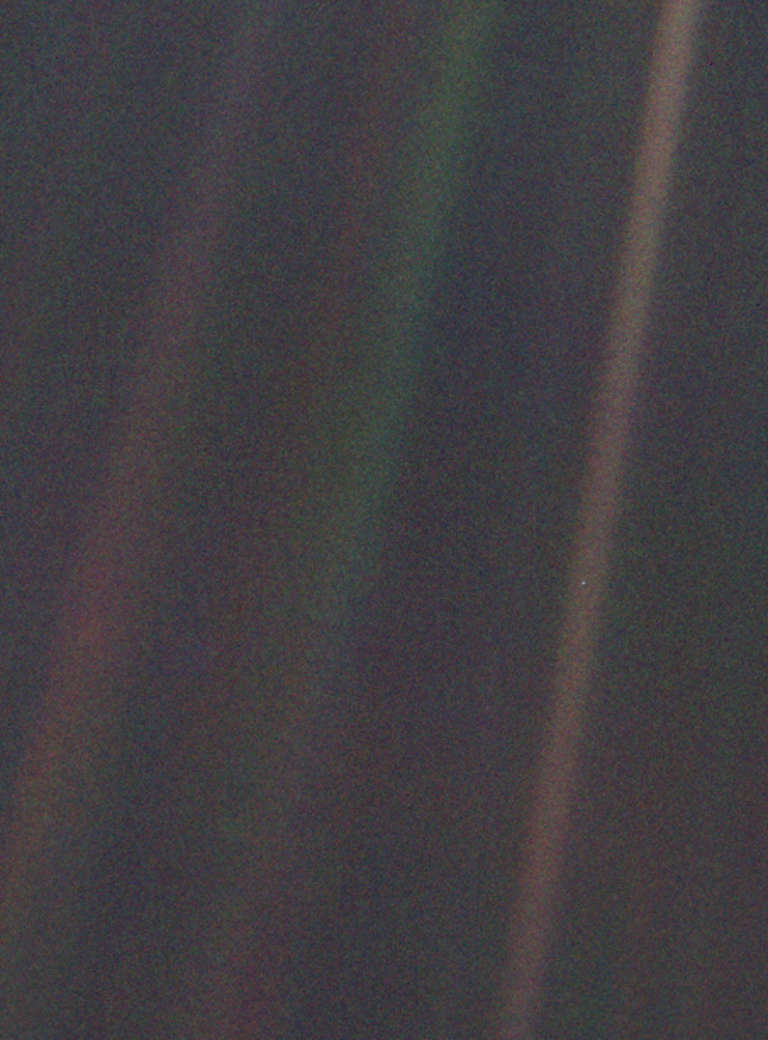
Sometime in 1988, I hear that Carl is hawking this idea around, too, and not having an easy time of it, again running up against very reluctant project personnel. I think I might have written him a letter that said, "I learned that you're trying to do this. I tried to do this a while ago and didn't get anywhere. I really think this should be done." And he responded basically, "Great. Help me." [laughs] So he put me in charge of figuring out what the exposure times for the images should be. I did some calculations, and wrote him back.
He had the clout, and he could maneuver politically to get it done. He had to go all the way to NASA headquarters. And I just learned recently that Ed Stone [the Voyager project scientist] accompanied him, so he was successful convincing Ed Stone. I was not.
We waited until the whole entire planetary part of the mission was over, in February 1990. And as you know, it became an incredibly popular image. Even though it's not much of an image to look at, it was incredibly popular and even the phrase "pale blue dot" has become synonymous with planetary brotherhood and protection of the environment.
Cassini repeats the pale blue dot
Mat Kaplan: On the back of my old business card, I have that other iconic image that you had even more to do with, Earth as seen from Cassini.
Carolyn Porco: When I was selected to be the imaging team leader on Cassini, it was immediately on my to-do list, to re-do the Voyager Pale Blue Dot image, only make it better. In the proposal that Carl wrote to the Voyager project urging them to do the pale blue dot picture, he wrote that the purpose was to take an image of Earth “awash in a sea of stars”. It didn't quite turn out like that. You can't see any stars. Actually, the Earth is sitting on a beam of light that was scattered in the optics of the canvass. So, it's not the most beautiful picture, but it's what Carl had to say about it and the way he romanced it that made it so iconic.
So I wanted to redo it. I think I probably started thinking about it again in 2010 or 2011. Mind you, I couldn't just go and say, "I want to do this, just to do it." It was really a difficult sell. There was going to be a mosaic made of Saturn when Cassini would be in eclipse [with Saturn blocking the Sun as seen from Cassini's perspective], and I managed to convince the originators of that mosaic to let us piggyback.
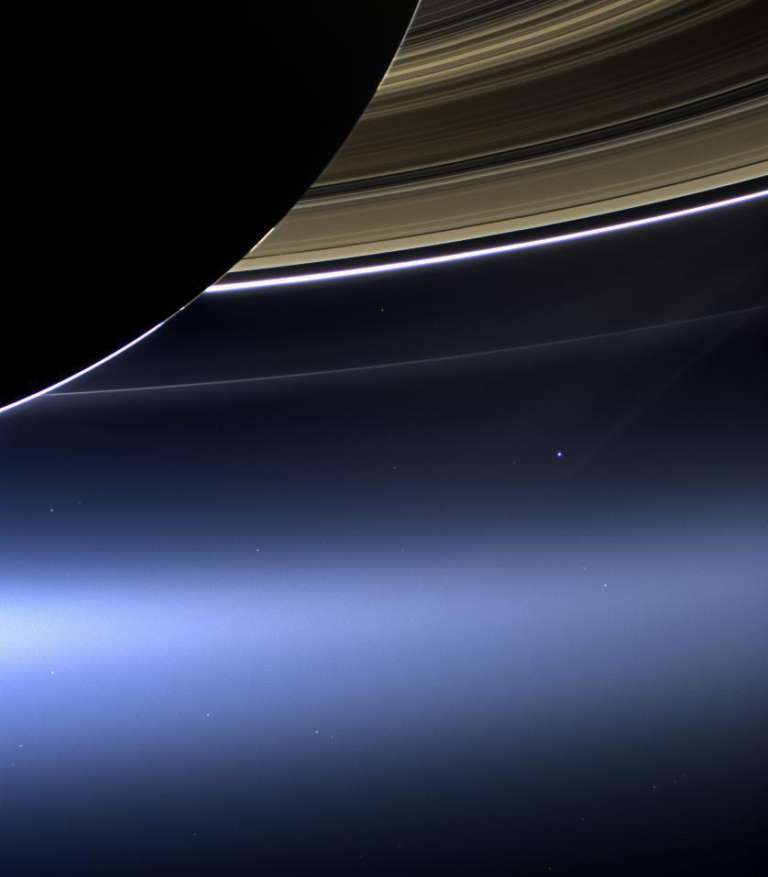
What Voyager did was take the picture of the Earth and then a week or two later release it to the public and say, "Hey, world. While you weren't looking, guess what we did?" I thought, wouldn't it be great if we told the people of the world ahead of time, and invite them to go outside at that time and think about their own existence, and how unique our planet is in its lushness and its life-giving properties. And just smile at the sheer joy of being alive on a pale blue dot.
Life on Enceladus
Mat Kaplan: Why do we need to go back to Saturn after the amazing success of the Cassini mission?
Carolyn Porco: Well, that's actually a very reasonable question. It really gets to an issue that I've been thinking about a lot. And that is: how much longer are we going to continue to explore the solar system? How much do we really need to know? Lots of resources go into this. And we need to have good reasons.
At Saturn, one of the most profound discoveries we made was that Enceladus has a global ocean with a salinity not too different from that of the Earth. By flying through the plume, we found evidence for large organic compounds. We couldn't measure the large organic compounds themselves; we didn't have instruments that could do that. But you could work backwards to show that the compounds that were detected actually came from larger compounds. And that's important because the organic compounds of biology like amino acids are relatively big. They're not like methane, they're not like acetylene, they're relatively big. So there are relatively big organic compounds in the material that is gushing out from Enceladus.
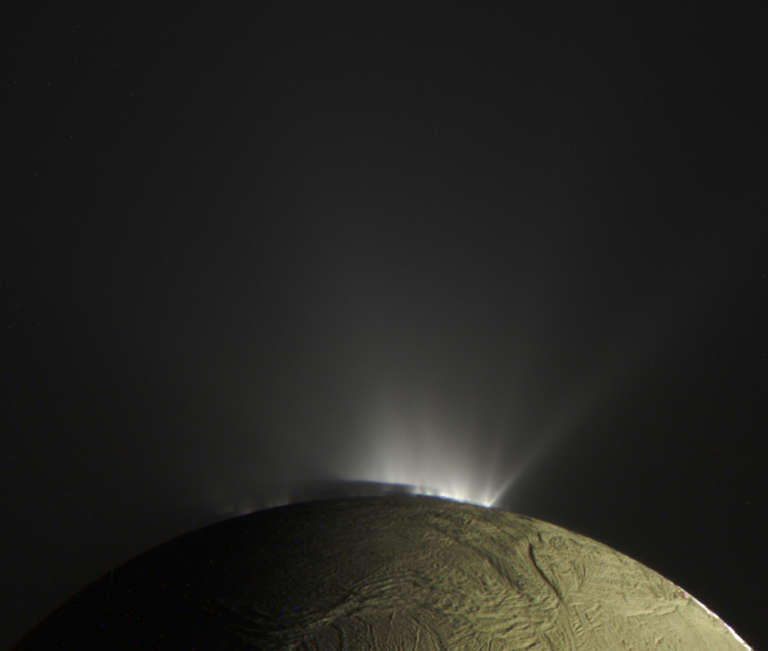
Mat Kaplan: Europa Clipper seems to be on track for visiting another ocean world at Jupiter. Do you wish there was an Enceladus Clipper?
Carolyn Porco: Clipper is going to do at Europa what we did with Cassini at Enceladus. A lot of what is said about Europa is actually speculation, so I think Clipper is going to do very important stuff. But next, we need to do a serious deep dive on Enceladus because Cassini didn't have the instrumentation that could tell you whether or not there was life.
There could be microbes in the frost particles that are in that plume. On Earth, just about every frost particle you run into, even in the stratosphere, has a bacterium at its center. They actually help to form the ice particles. There are reasons why you could have microbes, if they exist at the hydrothermal vents on the sea floor of Enceladus. How they would get themselves attached to any bubbles that come up through the water column is a common process here on Earth called bubble scrubbing.
So it's not out of the question that you could have microbes in the plume probably at the center of the ice particles. My [idea] is not only do you want to bring chemical instruments—I doubt they could give you 100% confidence that you'd found life—but also bring a microscope. Because if you could get a picture of an organism—even better if they're still alive, a little video—I mean, talk about knocking people's socks off.
Terraforming Mars
Mat Kaplan: Every now and then on this show we talk about Elon Musk's Starship, and wanting to establish a human community on Mars. You have strong feelings about this.
Carolyn Porco: Oh, you know I have strong feelings about this, have you heard me express my strong feelings?
Mat Kaplan: [laughs] A little, a little bit.
Carolyn Porco: Yeah. I think the guy's on drugs.
Mat Kaplan: [laughs] Well, that's a proven fact in at least one case.
Carolyn Porco: [laughs] But seriously, I think maybe he can't afford fact checkers. He's not going to terraform Mars. It's not possible.
Mat Kaplan: Well, you agree with our boss, Bill Nye, about that. I have a bet with him; I said, "You, you don't think terraforming is possible, within 10,000 years?" He said no.
Carolyn Porco: Let's just get to the facts. Recent results [from Mars missions] show there is an insufficient amount of CO2 (carbon dioxide) for terraforming.
Here's where I'm becoming very critical of commercial space. I hear things like "Mining asteroids will save the Earth," or, "We need to go to Mars because we're in danger here on Earth, we've screwed things up, we're going to get hit by asteroids." I grew up in the '60s. I was a Star Trek fan. I love the whole concept of us being a space-faring civilization, being on the starship Enterprise. It's a wonderful fantasy. It's inspiring, but let's get real—it can't happen.
People will live on Mars in the same way people live in Antarctica now. There is a continuously inhabited outpost there, but people aren't giving birth to the next generation there—it's not a multi-generational thing. And that's the way we will make our way across the solar system. We could see outposts on the Moon, maybe on Mars for reasons of scientific research. But to have this idea that humans are going to move off the planet, and that's the way we're going to survive, is irresponsible. I say these days, Elon Musk, Jeff Bezos, if you have so many resources that you could talk about putting thousands of satellites into low Earth orbit to connect the remaining 4 billion people onto the internet, why don't you spend those resources down here? Because we are at a crossroads with regard to our own planet. We are in very serious trouble. And we could use a little love. There's no Planet B. The idea that there's a Planet B is just fantasy. We are part of our planet. It is part of us. We evolved here. We are intimately woven into the web of life that is here.

Here's another thing that I laugh at—I'm wondering if Elon Musk thinks it would be great to go to Mars because he's seen the pictures that people have produced of Mars. They are extremely processed. The contrast is enhanced. The colors are enhanced. They look like Sedona [Arizona]. If you were really there on Mars, it would be very low contrast. Even on a good day, the atmosphere would be very hazy. Elon might not like it so much. So, let's get real about this and, and please, love your fellow earthlings. Love the Earth. That’s my new motto.
Pluto and planethood
Mat Kaplan: Do you think Pluto is a planet?
Carolyn Porco: [laughs] No. Pluto is not a planet. Never was a planet. It just suffered from a case of mistaken identity for a very long period. And people got so attached to the idea that it caused this big commotion [when the IAU adopted a new definition of planethood in 2006].
Jean-Luc Margot at UCLA showed that the eight bodies we call the planets are the ones that have sculpted our solar system. They're the ones that have cleaned out their orbital corridors and that's why we see eight distinct objects and not a disc of debris.
Margot has shown that if you use the same criterion for orbit-clearing that explains our solar system and you apply it to other stellar systems, you can show that some very large percentage of exoplanets also fit that criterion. What this really means is that when the Greeks thousands of years ago looked up at the sky and they saw these wandering, stellar-looking things, and called them planets, what they really were seeing were bodies that were dominant in the chronology of the solar system.
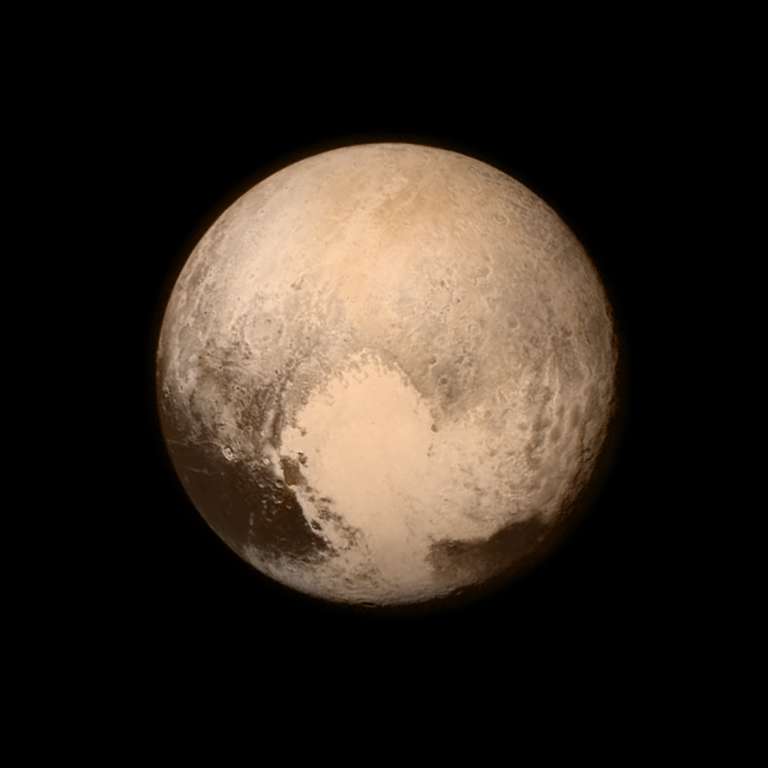
Mat Kaplan: What about the sort of compromise term that a lot of people have adopted: dwarf planet? Not just for Pluto, but Ceres and some of those other objects that have been found in the Kuiper Belt.
Carolyn Porco: Well, Dwarf Planet makes no sense when you think about it. Because how can anything be a dwarf member of a category that it is not a member of?
I'm sympathetic that people want to be able to talk about large-ish bodies. But I'm not sympathetic to a lot of justifications that I've heard. Some of them go like: "Look at Pluto. Look how complex its surface is." Well, complexity is not something that you can use to categorize because there's complexity on every spatial scale. Complexity is an outcome of our universe. It's everywhere to be found.
Mat Kaplan: I know that you in spite of all of this have marveled at those gorgeous images of Pluto returned by New Horizons.
Carolyn Porco: Oh, I love them. I was, of course, eager to see: was it going to look like Triton [Neptune's moon, which was imaged by Voyager 2 in 1989]? Triton was captured from a heliocentric orbit into orbit around Neptune. So I was expecting that Pluto would look like Triton, but I was half-hoping it wouldn't because then it would be more exciting. And it split the difference, because there are ways Pluto looks like Triton. It's an icy body, in a cold place, and has nitrogen on the surface. But it also has a lot of really unusual features like the big flat area [Sputnik Planum, the "heart"], and the convection of the ice. And, and the pictures were just really, really beautiful. They did a beautiful job with the instrumentation.
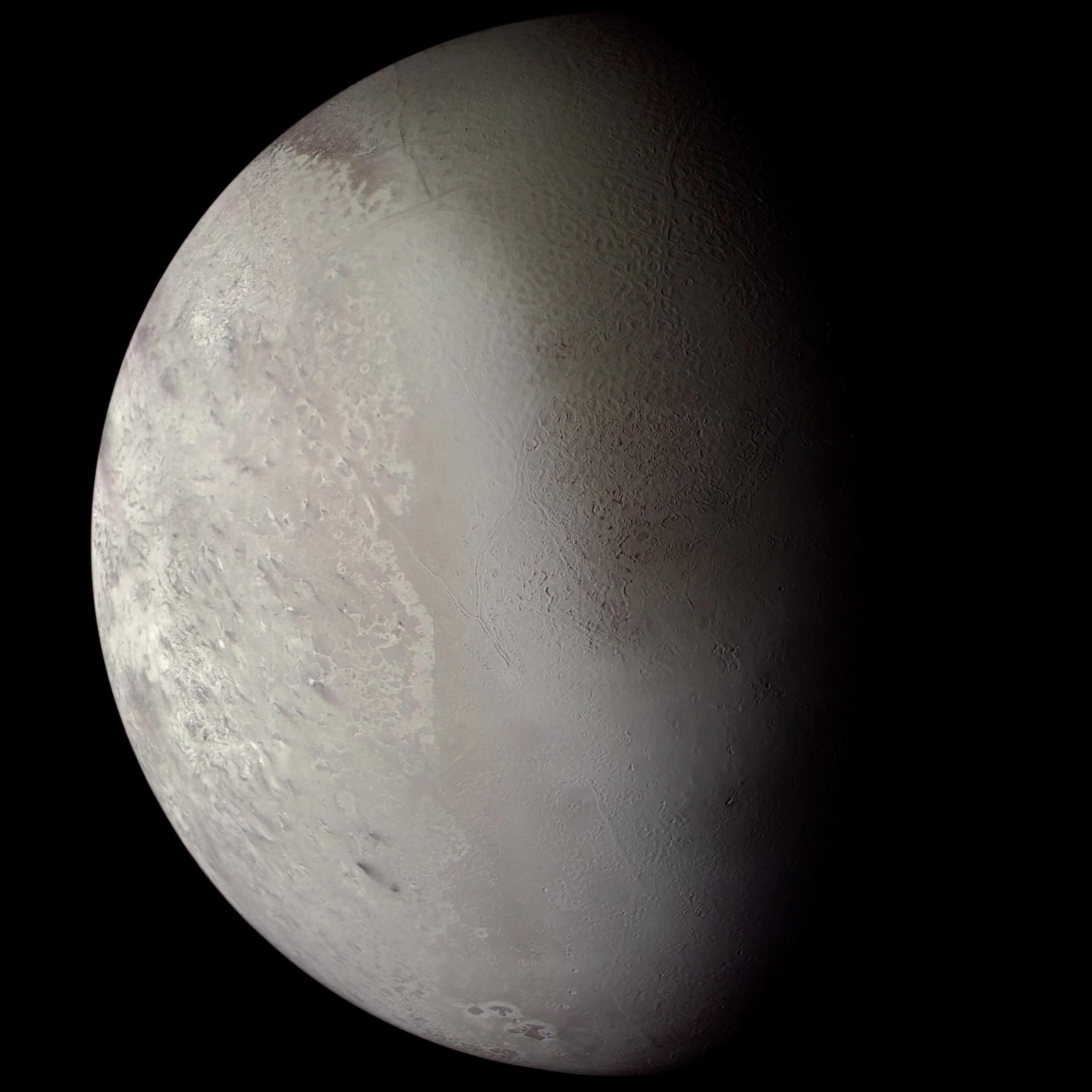
But you don't look at something like that and say, "Oh, it's so beautiful. It's so complex. It should be called a planet." That is not the way we do things in science. We don't want to disappoint the members of the public, and I am all about informing the public on what we do and getting them inspired to feel a part of it. But the public should not be telling scientists how to do their science any more than a member of the public should stand behind a dentist while she's drilling in your mouth and say, "I think you should go a half-inch back and three inches down." They shouldn't be telling us how to categorize things. We love them. We want them to enjoy what we do. But when push comes to shove, scientists are scientists for a reason. You've got to let us do our job.
Carl Sagan
Mat Kaplan: What were the most important things that you got out of your relationship with Carl Sagan?
Carolyn Porco: I felt that he had my back. There were times when someone was rude to me or said something to me that was really inappropriate at a meeting. And in his very Carl way—very gracious, witty, calm, and measured—he would defend me, but not tell the guy, "Oh, you're being such a jerk." [laughs] That's something I might do.
I also watched the way that he conducted himself as a scientist in combat. Sitting around a table when there's heated discussion, he was always very measured and calm. I don't know if it was his voice, his bearing, or what, but he could bring tempers down. He just was very principled in the way he conducted himself. And so I use him as an example of what a scientist really should and could be.
He was pretty much that way personally, too. What you saw on television is what you got. I think he deserves all the affection and accolades that he's received during his life and since, because he was the real McCoy.
Mat Kaplan: It must have been quite an honor when you were asked to help out with the production of the movie Contact.
Carolyn Porco: It was a complete surprise. He invited me to have dinner with him and Annie [Ann Druyan, Carl Sagan's wife and collaborator on various projects including Contact] at their house. So we were having dinner and as you can imagine, the conversation was very wide-ranging: everything from SETI to the pale blue dot and women in science and so many things. It wasn't until afterward that he invited me to be a consultant on the main character, Ellie Arroway. I realized then I was probably being interviewed for the job at that dinner.
I'll never forget, he called me up and said, "Out of all the people we know, out of all the women scientists we know, we think that you come closest to being what we want to portray on the screen." So of course I was delighted.
The plan was for me to meet with Jodie Foster. She was going to kind of shadow me for a day or two. So there was about a year when the people at Warner Bros. would call me up and say, "Oh, quick. Give us your schedule for the next two months." And so, I'd do it and then two months would go by and nothing would happen. And then they'd call me again, same thing. And this went on about three or four times. I remember calling Carl up and saying, "Carl, what's going on here?" And he said to me, "Hollywood makes the DPS [Division for Planetary Sciences of the American Astronomical Society] look like the paradigm of fascist order." [laughs] So, I never got to meet with Jodie Foster.
Mat Kaplan: I can certainly see some elements of your character in what Jodie Foster brought to that wonderful character at the center of that movie.
Carolyn Porco: Okay, so you tell me: What characteristics?
Mat Kaplan: Her independence, the enormous curiosity, the passion that she brought to her work.
Carolyn Porco: I asked Carl directly, like twice, "Who is this character based on?" And he said, "Well, it's really based on me." The voice of Ellie is Carl's voice in talking about the approach to science, the conflict between religion and science. And all that stuff that she says, or what she espouses, is all Carl. That's his voice. But I think he pulled together bits and pieces from various people.
Mat Kaplan: A little of Jill Tarter [SETI pioneer], a little of you, a lot of his own voice. Some of Annie as well.
Carolyn Porco: Oh, I think it's mostly Annie. But I think, I don't know what you would call it, the accouterments were taken from various people. Like, I went to graduate school at Caltech and I have long hair and I'm feisty. Jill's father died when she was young; I think he got that from her. I know that there are scenes in the book that come out of Annie's life. And I think they took a lot of their own relationship and put it in the book. So I think of Ellie as kind of a composite character. But really, if you're hell-bent on thinking of Ellie Arroway as a single person, then she's Carl Sagan in drag. [laughs]
The Time is Now.
As a Planetary Defender, you’re part of our mission to decrease the risk of Earth being hit by an asteroid or comet.
Donate Today

 Explore Worlds
Explore Worlds Find Life
Find Life Defend Earth
Defend Earth


